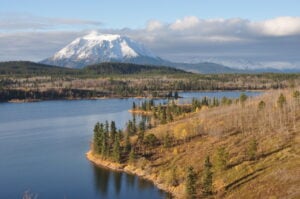
People & Culture
Kahkiihtwaam ee-pee-kiiweehtataahk: Bringing it back home again
The story of how a critically endangered Indigenous language can be saved
- 6310 words
- 26 minutes
This article is over 5 years old and may contain outdated information.
Environment

What was happening in the world 4,200 years ago? Indigenous Peoples in the Pacific Northwest saw intense rains and the growth of mountain glaciers; ancient Egypt’s Old Kingdom fell amid political upheaval and agricultural changes; and the Akkadian empire, which once stretched from the Red Sea in the south to Turkey in the north, withered away with its crops in a drought. Little did those people know they were living through the dawn of a new geological age.
While technically we’ve all been living in it for the past four millennia, scientists only settled on a name and start date for our current time period last month. Welcome to the Meghalayan age.
Geologically speaking, an age is the smallest of five categories that track time, after eons, eras, periods and epochs. Divisions between each are determined by significant changes in the Earth’s climate, geology, and living species. For example, the (relatively) sudden extinction of the dinosaurs marks the change from the Mesozoic to the Cenozoic era on the geologic timescale.
Scientists found chemical evidence within Greenlandic ice cores and a stalagmite from a cave in India’s Meghalaya state that suggested multiple broad-scale climatic shifts took place during the Holocene epoch — the period of time stretching from 11,700 BC to the present day. Based on these findings, the Holocene has been subdivided into three distinct ages: the Greenlandian age (11,700 years to 8,200 years ago), the Northgrippian age (8,200 years to 4,200 years ago) and the Meghalayan (4,200 years ago to present day).
What’s exciting about the climate events identified, says Brock University geologist Martin Head, is that we’re actually able to see how they impacted human life.
The abnormally dry and cool conditions that marked the start of the Meghalayan age, for example, had knock-on effects for people around the world.
“For the first time, geological time and archaeological time have been tied together,” Head says. “It reflects the collapse of societies that are associated with a number of civilizations.”
Head, who worked on a commission to approve the decision, hopes that the findings will inspire more archaeological research targeted to the beginning of the Meghalayan age.

Though the International Union of Geological Sciences just ratified the divisions to the Holocene epoch, many scientists already believe that we’ve left that period of history for a new one: the Anthropocene, or the epoch of human impact upon Earth’s climate and natural systems.
Researchers generally agree that the starting point of the Anthropocene can be found in the mid-20th century, shortly after the Second World War at a point called the Great Acceleration.
“You could look at the amount of concrete being produced, the amount of global travel, the number of McDonald’s outlets,” says Head. “These are indicators of industrial globalization that show a sharp uptick around the 1950s and 60s.”
While many, including Head, are eager to define the new geological epoch, the process to make it official is slow and bureaucratic. The proposal to distinguish Meghalayan, for example, was first presented in 2010 and was only approved last month. It took eight years of scientific rigour and peer scrutiny to reach a global scientific consensus on the idea.
Head says that the proposal for the Anthropocene still is not complete, so although the epoch may have already started, its official designation is still a long way off.
Are you passionate about Canadian geography?
You can support Canadian Geographic in 3 ways:

People & Culture
The story of how a critically endangered Indigenous language can be saved

Environment
As the impacts of global warming become increasingly evident, the connections to biodiversity loss are hard to ignore. Can this fall’s two key international climate conferences point us to a nature-positive future?

People & Culture
For generations, hunting, and the deep connection to the land it creates, has been a mainstay of Inuit culture. As the coastline changes rapidly—reshaping the marine landscape and jeopardizing the hunt—Inuit youth are charting ways to preserve the hunt, and their identity.

Environment
Yukon-based ecologists uncover four main patterns influencing changes in Yukon and address how outcomes can be improved